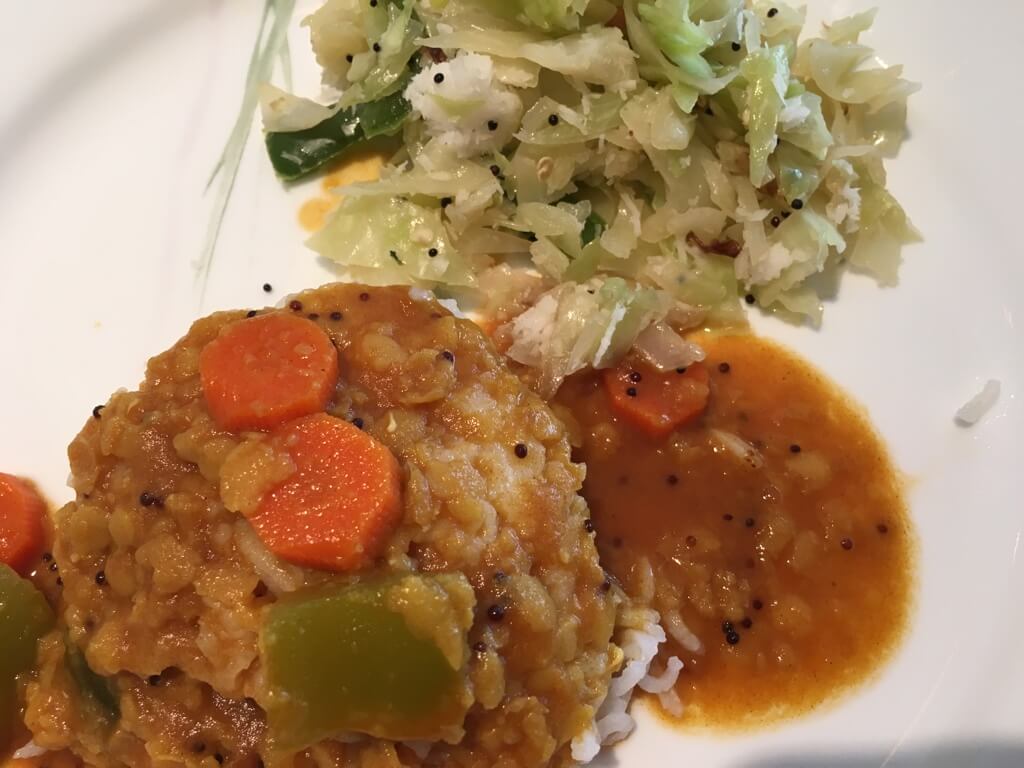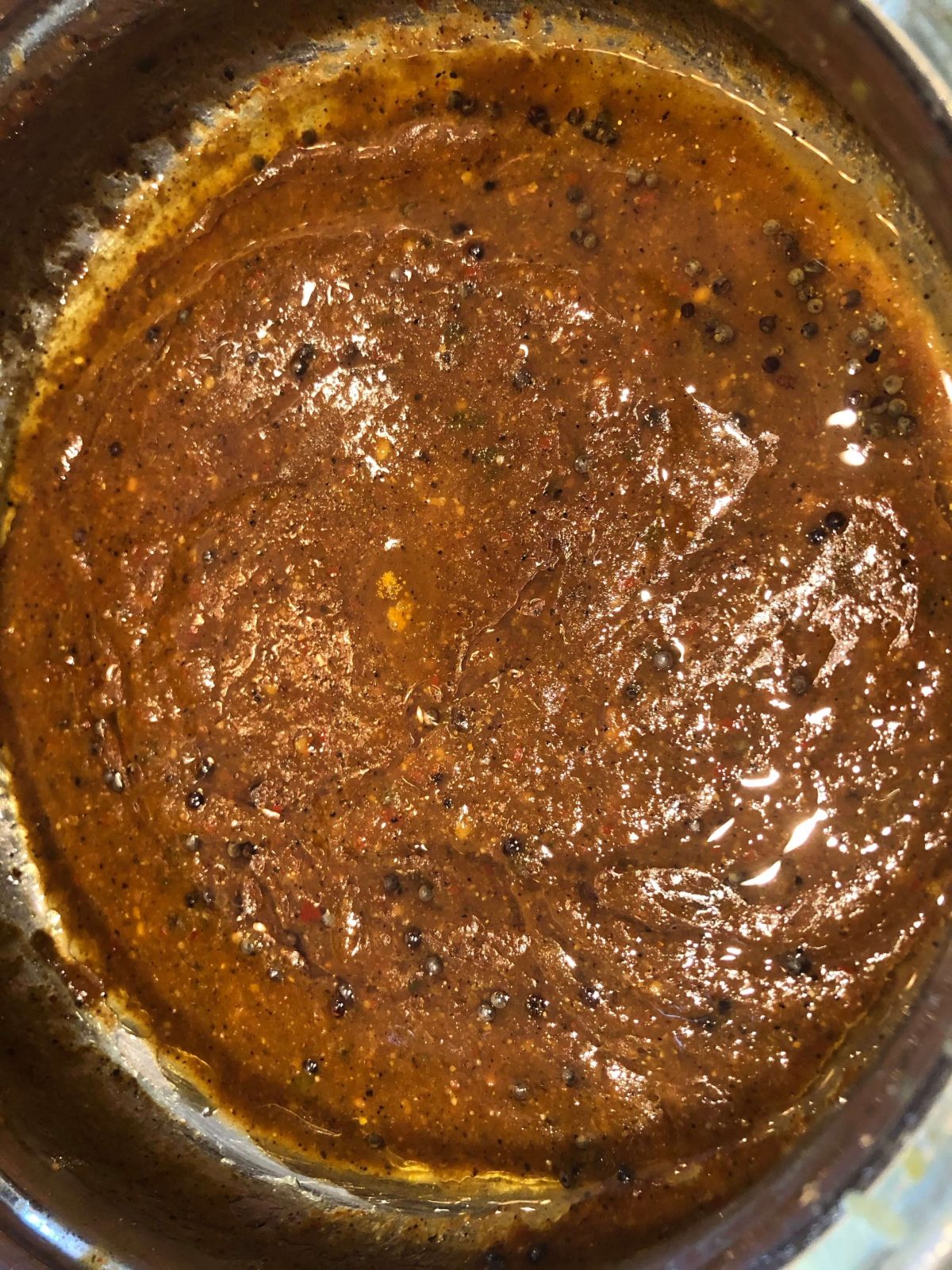A super simple side dish. Sometimes, you have a lot of vegetables – a couple of potatoes, a carrot, some peas, half a cauliflower, but none enough to make a side dish. This is a perfect curry to use up all of those, and make a great curry that’s perfect as a side dish for rotis. This is a great lunch box item, a quick breakfast dish, or an excellent vegetable to go along with a dal, and some rice or rotis.
Puliyodarai – Tamil Iyengar Style (Tamarind Rice)
Ah! What can I say about puliyodarai that hasn’t been said. It’s a kind of mixed rice, what we call “kalanda sadam” in thamizh. The gravy that it’s mixed with is made up of tamarind extract and a spice mix that has chana dal, red chilies, coriander seeds, a little bit of black pepper, and most importantly, sesame seeds. These spices are toasted in a bit of oil, preferably sesame, and made into a powder. The tamarind juice is boiled with a bit of oil, hing, chana dal, red chilies, and curry leaves and made into a thick paste – this is called pulikachal. It’s then mixed with rice, a bit of the spice powder, and tempered with more hing, curry leaves, and roasted peanuts. Heaven! It’s a very popular prasad in many temples, travels really well, and is part of the meal on one of the pongal days along with coconut rice, and yogurt rice, and fried papads, vathals. The most important thing to note about puliyodarai is that it needs sesame oil, and sesame oil only. None other will do if you want authentic puliyodarai.
This specific version is the Iyengar version as I’ve learned. The Iyer version stops with making the puli gravy with chilies, curry leaves, methi powder and hing. At that stage, it can be mixed with rice and eaten. The Iyengar version goes one step further and adds this beautiful spice powder, the dominant flavor there being sesame seeds.
To summarize, there are 3 steps in making puliyodarai:
1. Make the pulikachal paste (this will stay in the refrigerator for a couple of months, so make a good quantity)
2. Make the spice powder
3. Make the rice, and mix, add tempering
7 Kari Kootu (7 Vegetable Kootu)
This kootu, also known as thiruvadirai kootu is a medley of a minimum of 7 vegetables, made on the day of Arudra darshan in the month of margazhi/December, in honor of lord Shiva. Traditionally it’s accompanied by a sweet rice dish called Kali. It’s made with the freshest produce of the season, which is the winter season, and includes squashes, gourds, and root vegetables. This recipe is sourced from Meenakshi Ammal’s Samaithu Par book. It is a completely balanced dish, loaded with vegetables, protein (dal), fat (coconut), spices and tamarind for sourness. On to the recipe now!
Kuzhambu (Paruppu Kuzhambu)
Kuzhambu means a thick mix/slurry. True to its name, this kuzhambu is a spicy thick gravy with a tamarind base, with a few vegetables, and dal. The difference between vathal kuzhambu, kara kuzhambu and this is that this has cooked dal added to it. Then why is it not sambar? Good question. We use a pre-made spice powder to season this dish, whereas for sambar, we freshly roast and grind spices to make the masala. Also, this is a bit thicker than sambar.
So, as far as tamarind based gravies go, there are mainly 3 kinds in Tamil (brahmin) cooking:
Vatha kuzhambu/kara kuzhambu: no dal, limited vegetables, more oil and almost like a pickle
Sambar: Tamarind, dal, vegetables, freshly roasted and ground masala
Kuzhambu: Thick tamarind gravy, premade masala/spice powder, dal, limited vegetables.
Milagu Kuzhambu (Black Pepper and Tamarind Gravy)
This is a thick jam-like gravy with a tamarind base, spiced with a mix of roasted powdered pepper and lentils. Perfect over a bed of hot steaming rice, with an accompaniment of vegetables (kootu) or curry.





